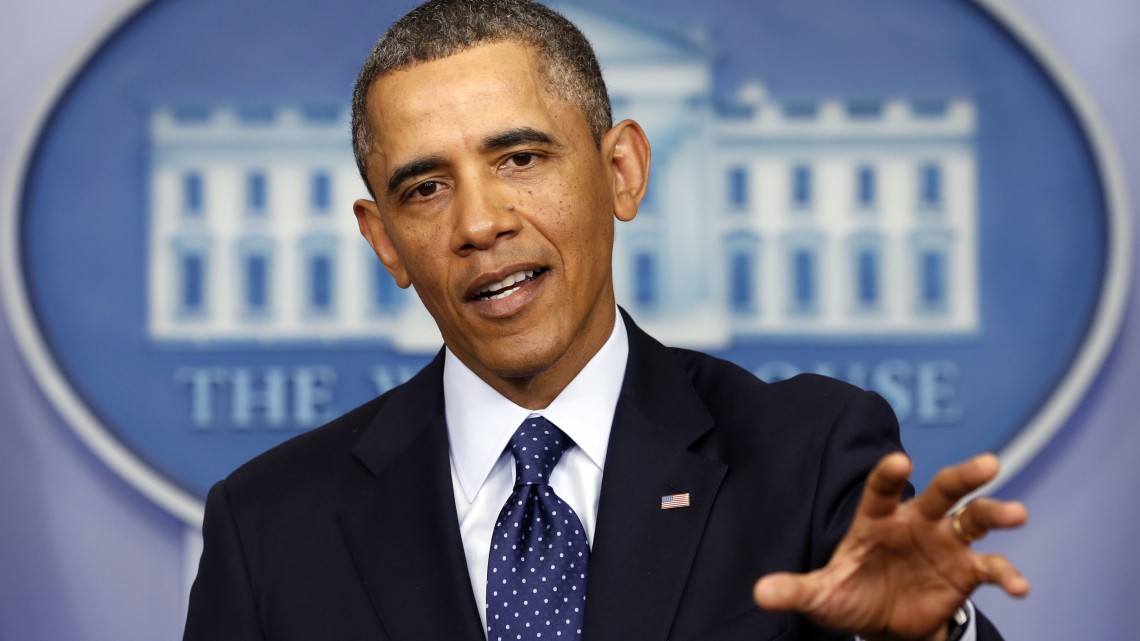Obama paints doomsday scene of global warming in Alaska
JOSH LEDERMAN, Associated Press
ANCHORAGE, Alaska (AP) — President Barack Obama is painting a doomsday scenario for the Arctic and beyond if climate change isn’t dealt with fast: entire nations submerged underwater, cities abandoned and refugees fleeing in droves as conflict breaks out across the globe.
It’s a harrowing image of a future that Obama insists is inevitable unless the world follows his and America’s lead by making sweeping cuts to greenhouse gases. Lest his sense of urgency get lost, Obama was to drive the message home on Tuesday by hiking a melting glacier in Alaska.
Obama is counting on Alaska’s exquisite but deteriorating landscape to elicit a sense of urgency that his previous calls to action on climate change have not. He opened his three-day trip to the nation’s largest state on Monday with a speech to an Arctic climate summit, calling global warming an escalating crisis already disturbing Alaskans’ way of life.
“We will condemn our children to a planet beyond their capacity to repair,” Obama said. Alluding ironically to the threat of rising seas, he castigated leaders who deny climate change as “increasingly alone — on their own shrinking island.”
Meanwhile, amid concerns that the U.S. has ceded influence to Russia in strategic Arctic waters, the White House announced Tuesday that it would ask Congress to speed up construction of new icebreakers to protect U.S. interests and natural resources. The U.S. currently has two working icebreakers, compared to Russia’s 40.
On his first day in Alaska, Obama offered no new policy prescriptions or federal efforts to slow global warming, but said the U.S. is doing its part by working to cut emissions of heat-trapping gases by up to 28 percent over the next decade. Obama set that target as the U.S. commitment to a major global climate treaty to be finalized in December, and has urged fellow leaders to make similarly ambitious pledges as works to secure a cornerstone of his environmental legacy.
Yet by turning to Alaska’s majestic mountains and stirring coastlines to make his point on climate, Obama also brought fresh attention to deep and persistent divisions in the U.S. over how to balance the nation’s energy and environmental needs.
Heavily dependent on energy revenues, Alaska is suffering economically due to the recent plunge in oil prices, a blow made all the more poignant by the fact that the cost of energy here is exceedingly high. Alaska leaders of all political stripes have implored Obama to open up more of the state to drilling to help alleviate a $3.5 billion budget deficit that has triggered steep cuts to state services — a critical lifeline for poor and rural Alaskans.
“For a population as small as we are, it’s pretty significant,” Alaska Gov. Bill Walker told reporters aboard Air Force One as he flew with Obama to Anchorage.
Yet even Obama, who has elevated global warming as a rallying point in his second term, has a complicated record on energy that has muddied his clarion call on climate.
The president has struggled to explain how his dire warnings square with steps he’s taken to expand energy production, even at the risk of higher emissions. Environmental groups took particular offense at the administration’s move to allow expanded drilling by Royal Dutch Shell off Alaska’s northwest coast — just a few weeks before Obama came to Alaska to preach on climate change.
Obama has defended those decisions by arguing that some fossil fuel development is a necessity as the U.S. undergoes a longer-term shift to clean, renewable fuels that don’t cause the planet to get warmer. But that explanation rang hollow for environmental groups, who called the Shell decision a stain on his climate legacy.
“The timing of President Obama’s trip to Alaska and the Arctic could not be more ironic, given that his administration just approved dangerous drilling plans that put the region’s well-being in serious jeopardy,” said Michael Brune, the Sierra Club’s executive director.
On a presidential trip more about powerful visuals than words, the high point was to come Tuesday when Obama flies by helicopter to Seward to hike the famed Exit Glacier, a sprawling expanse of ice in Kenai Fjords National Park that’s liquefying under warmer temperatures.
Some 700 square miles in the Kenai Mountains are blanketed by glacier ice, remnants of the Ice Age, when roughly a third of the Earth was covered with sheets of ice. One of nearly 40 glaciers springing out from Harding Icefield, Exit Glacier has been receding for decades at an alarming rate of 43 feet a year, according to the National Park Service.
After hiking the glacier, Obama planned to put his survival skills to the test while taping an episode of the NBC reality TV show “Running Wild with Bear Grylls.” Then the president was to board a U.S. Coast Guard vessel to tour the national park before returning late Tuesday to Anchorage.
[livemarket market_name="KONK Life LiveMarket" limit=3 category=“” show_signup=0 show_more=0]






No Comment